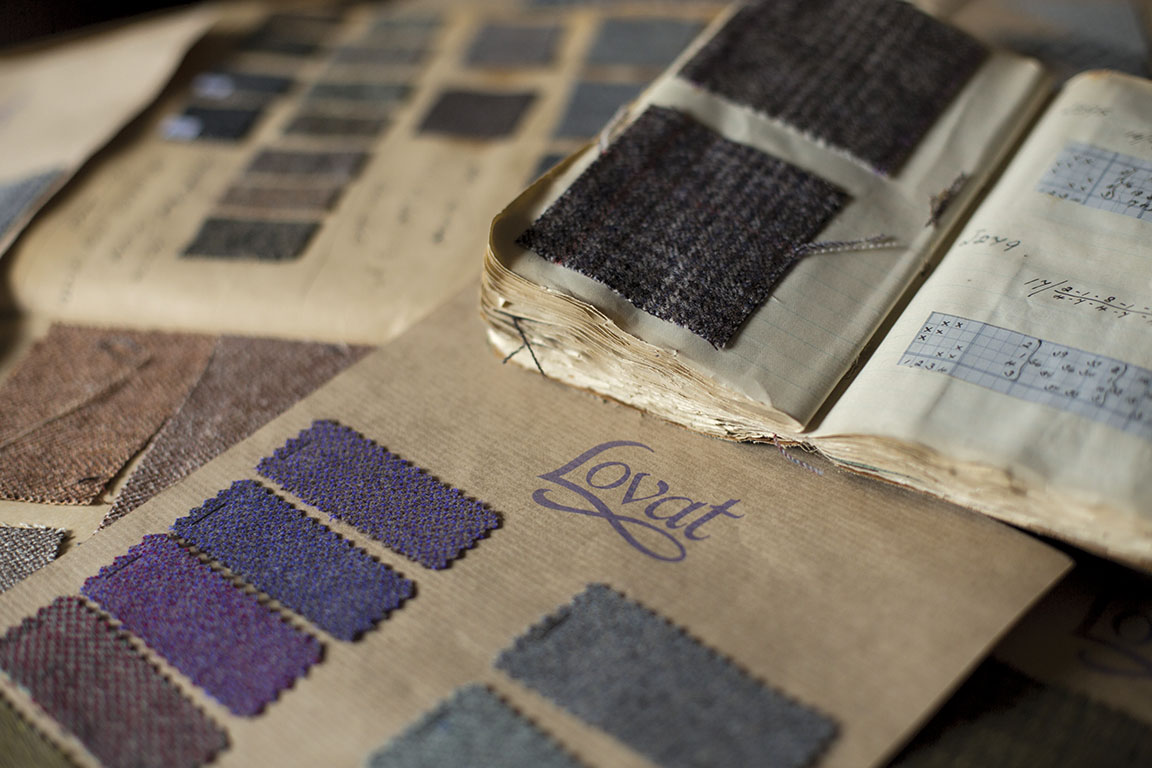Where Tweed Began

The story of tweed dates back about 200 years to a Scottish Border weaver, a London cloth merchant, and a fortuitous mistake. At that time, the traditional woolen cloth made in the town of Hawick (locally pronounced Hoick), in the Scottish Border country, was known as “tweel.” Six bales of this cloth were shipped to James Lock in London and the delivery note was misread. When the time came to reorder, either from poor penmanship or an ink blotch, the “l” was read as a “d” and the London clothing clerk ordered “tweed” for his next consignment. In the modern world of intellectual property rights, the mill owner undoubtedly would have rushed to his lawyer. He didn’t—and the name tweed fell into common usage to describe this richly colored and hard-wearing cloth. Today, Lovat Mill, dating back to 1882, continues as the sole producer of tweed in Hawick. The company is dedicated to traditional manufacturing standards and quality practices, through decades of great change.
When Stephen Rendle and Alan Cumming were looking to establish their own weaving business in the 1990s, they heard that the tradition of weaving tweeds in Hawick was soon to be lost by the impending closure of the mill. “This mill, with its amazing history, was about to close and die. We spoke to the owners and assured them that closure was not the only option, and we struck a deal.
Since that time, we have restored the mill’s fortunes and have ensured its place in the world once more,” says Rendle, Managing Director of Lovat Mill. Design Director Alan Cumming continues: “At its core, the company had an amazing client list as it specialized in the weaving of estate tweeds—part of a long-established tradition of estates having their own patterns worn by employees and landowners. The list of clients was impressive. How else would they get their tweeds? The imperative was to rebuild the business.”
The other type of cloth for which Scotland is known is tartan—but tartans are linked to families, whereas estate tweeds are linked to the land. “Tweed designing is not limited by a strict pattern, as tartan is, and this gives our design team much latitude,” says Rendle. “In all, we weave about 170 individual estate patterns, which are solely for the use of each estate—none ever copied. We weave for private sporting estates and regimental tweeds—for the Scots Guards, for example, or the Royal Regiment of Scotland for official use.” —Covey Rise Staff
The full “Where Tweed Began” is published in the August- September 2015 issue.
“This mill, with its amazing history, was about to close and die. We spoke to the owners and assured them that closure was not the only option, and we struck a deal. Since that time, we have restored the mill’s fortunes and have ensured its place in the world once more,”
The full “WHERE TWEED BEGAN” feature is pUblished in the
August-September 2015 Issue
SAVE 20% ON YEARLY SUBSCRIPTIONS
MORE FROM THIS ISSUE
SHARE ON
You may also like
This portable piece is handcrafted to last a lifet...
These shot glasses are hand crafted and feature an...
This Filson Folding Knife is handmade in Seattle w...

































